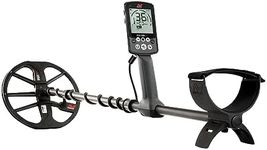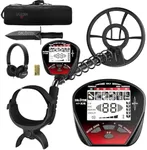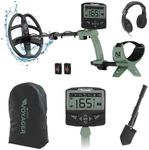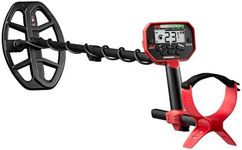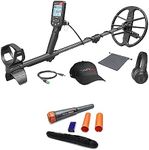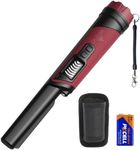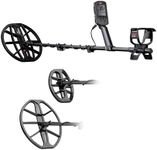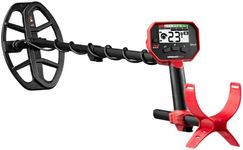Buying Guide for the Best Metal Detector Depth
When choosing a metal detector, one of the most important factors to consider is its depth capability. This refers to how deep the detector can sense metal objects buried underground. Understanding the depth capability of a metal detector is crucial because it determines the range of objects you can find, whether you're searching for coins, relics, or other treasures. The depth capability can vary significantly between models, so it's important to match the detector's depth capability with your specific needs and the type of terrain you plan to search.Detection DepthDetection depth is the maximum depth at which a metal detector can identify a metal object. This spec is important because it determines how deep you can search for buried items. Generally, the detection depth is influenced by the size and type of the metal object, the soil conditions, and the frequency of the detector. For small objects like coins, a depth of 6-10 inches is typical, while larger objects can be detected at greater depths, sometimes up to several feet. If you're searching in areas with a lot of mineralization or trash, you might need a detector with better depth discrimination. Choose a detector with a depth capability that matches the type of objects you're interested in finding and the typical conditions of your search area.
FrequencyFrequency in metal detectors refers to the number of times the detector's coil sends and receives signals per second. This spec is important because it affects the detector's sensitivity and depth capability. Lower frequencies (around 3-7 kHz) are better for detecting larger, deeper objects, while higher frequencies (above 15 kHz) are more sensitive to smaller, shallow objects. If you're searching for small items like gold nuggets, a higher frequency detector might be more suitable. Conversely, if you're interested in finding larger relics or coins at greater depths, a lower frequency detector would be more appropriate.
Ground BalanceGround balance is a feature that helps metal detectors distinguish between metal objects and the natural minerals in the ground. This spec is important because it can significantly affect the depth and accuracy of your detections. There are three types of ground balance: preset, manual, and automatic. Preset ground balance is fixed and suitable for areas with consistent soil conditions. Manual ground balance allows you to adjust the settings based on the soil, which is useful in areas with varying mineral content. Automatic ground balance adjusts itself as you move, providing convenience and adaptability. Choose a ground balance type that matches the complexity of the terrain you plan to search.
Coil SizeThe coil size of a metal detector affects its depth capability and the area it can cover. Larger coils can detect objects at greater depths and cover more ground, making them ideal for open areas. However, they may be less effective in trashy areas due to their broader detection field. Smaller coils are better for detecting small objects and are more precise in areas with a lot of metal debris. If you're searching in wide, open spaces, a larger coil might be beneficial. For more cluttered or mineral-rich areas, a smaller coil could provide better results.
